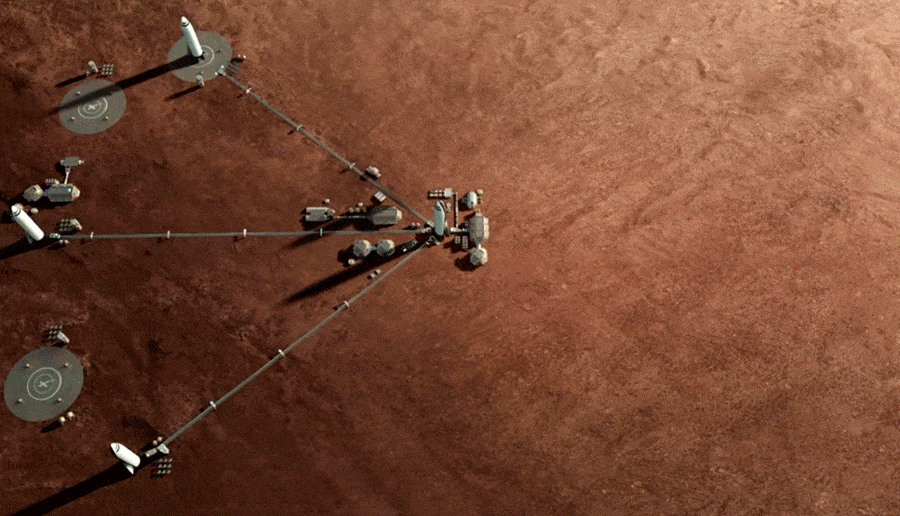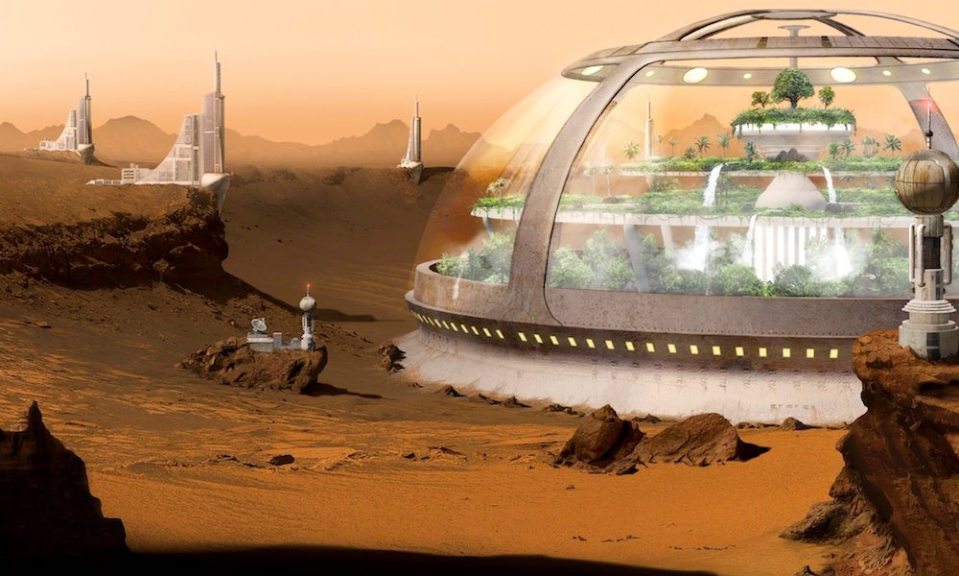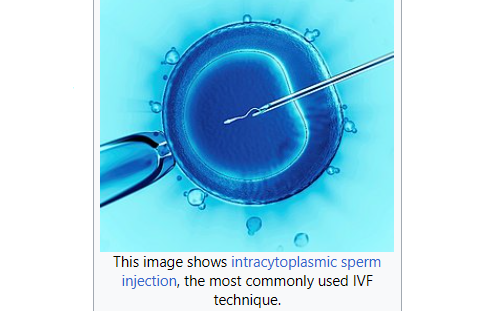Over the last decade many people working in space exploration have become much more skeptical about the possibility of human colonization of Mars, at least in the “near” term (which for these purposes covers the next century or two.)

Human exploration of Mars, of course, is a different thing altogether. There are many great reasons for humanity to send people to explore Mars. Some of these missions may involve people visiting the planet and living there for weeks or months. Soon after, some larger missions, centered around growing Mars bases, could have explorers choosing to spend a year or two on Mars before coming back to Earth.

Image from ‘What will SpaceX do when they get to Mars?’ Primal Space, YouTube
So to be clear, this analysis is in full support of this growing exploration of our sister planet.
The concern here is about people who choose to engage in actual colonization – people who to Mars and have children there. What is life going to be like for humans born in the initially very small ,enclosed spaces on Mars? What will life be like for them in terms of psychological safety, physical safety? What will the effect be on future generations of people born on Mars?

GIF from art made by SpaceX
Here are some problems with humans colonizing Mars
Almost no local resources
If there’s ever any breakdown in society, they have no energy producing resources to fall back on. There’s zero fossil fuels there. And as far as we know there’s almost zero sources for geothermal energy.
Wind energy
Using wind as energy could in principle work but the atmosphere of Mars is almost 99% less dense than Earth’s atmosphere, so Martian wind is very weak. It would take many huge wind generators to produce even a modest amount of electrical power.
Solar power
Solar power is possible on the surface of Mars. But since Mars is much further from the Sun than Eart is, the sunlight per square meter on the surface is much weaker. It would take vast areas of land to have an acceptable amount of energy for even small populations.
“Any self sustaining colonies will be totally dependent on power and the only really viable source is solar power. There is enough sunlight at Mars orbit, so it could be done. After all, the surface of Mars is as large as all the land on Earth, so there is room for extensive solar farms. This introduces two further problems, first making enough solar arrays would need a lot of resources that initially would have to be brought in to kick start it. But once past a certain point this could be done locally. The second is that Martian dust would regularly reduced efficiency requiring a crew of cleaners constantly keeping them dust free. Either automated or manually it would be a big task.”
“Massive orbital solar arrays beaming energy to the surface is another possibility; one could manufacture them on Phobos or Deimos. The initial operations would require fission or fusion to bootstrap, though. Mars’ geosynch is pretty close to the planet.”
Hydro-power and tidal-power
There’s no hydro-power on Mars because there are no streams.
There’s no tidal power because there’s no ocean. Even if there was an ocean, Mars has no large moon, so the ocean wouldn’t experience tidal forces. Mars will never have tides.
Nuclear fission power
For at least the near future – the next century – there’s almost no hope of mining significant amounts of uranium. It would be very difficult to create the infrastructure for mining and refining uranium, if it evebn exists there.
Worse, Mars has a significantly different geological history than Earth. It doesn’t have plate tectonics, at least not in any way like Earth. It has much less water erosion geological processes as well, due to the fact that its surface water dried up billions of years ago.
“On Earth those processes tend to move heavy metals towards the surface and concentrate them; on Mars (and on the Moon, and likely most asteroids as well) the concentrations will be scattered throughout the volume and hence much more resource intensive to mine.”
There’s another reason that Mars likely has far less nuclear material to mine:
“The Earth is a bit special. It had another planet strike it, mixing up the mantle, and redistributing the heavier elements. Mars had a more mundane formation. It cooled more slowly, concentrating the heavy elements deep in the crust. So lead, gold, platinum, thorium, uranium etc… will be rare.
As such, there may be no meaningful deposits of fissionable materials near the surface of Mars at all. Therefore, even nuclear power sources for Mars would have to be imported from Earth.
Geothermal power
“May be possible, Mars does have a near-surface temperature gradient that’s suitable (if not high potential) but it’d require drilling pretty deep, deeper than on Earth – although an advantage there is Mars has a very cold atmosphere and surface.”
Martian soil
Growing crops on Mars, in indoor domes with air and water, might be possible, but it could be very difficult. The soil is poisonous due to perchlorates and other molecules. People would need to develop economical ways to transform vast amounts of Martian soil into something safe for our crops to grow there.
Psychological health of humans raised indoors
There’s a lot of biological and psychological data on human health. We know that humans will not be mentally and physically healthy unless they have open space, blue skies, and a climate with natural spectrum sunlight much of the time.
Colonists living on Mars won’t have any of that unless, over many generations, we build extremely large, safe indoor biodomes. People living their lives on Mars would need grasslands, hiking trails, hills, places to climb, places to have picnics, places to play sports, etc.
People living on Mars would never be able to do something as simple as walk along the beach, sail a boat, or go on a hike in the woods.
So to ensure human health and happiness even at a minimum level, what would need to be done?
Society on Mars would need to dig out and safely enclose Superbowl stadium-sized areas, and not just one. A few dozen of them would be needed to provide the spacious environments necessary for psychological health. After all, the entire point of having a human colony on Mars is to have humans live and thrive on Mars – not to be prisoners for life in enclosed rooms and corridors.

Image found on iDrop news, Elon Musk Will Soon Reveal His Extraordinary Plans for Mars Colonization
Doing any of the massive digging necessary to do this would require tremendous amounts of power yet that’s precisely what we do not have a lot of on Mars.
I have seen the claim that a lack of sunlight, a lack of blue sky and the outdoors, would only be a first-generation problem. Some have held that people born on Mars would never know what they are missing. Firstly, there is no scientific evidence to support this position. Secondly, even hundredth generations of humans notice the “wrong” sunlight. It is known that increased rates of clinical depression are linked to people who live in regions with less sunlight even here on Earth. This is not surprising since our species evolved on the plains of Africa. Even human populations moving to a place on Earth like Siberia or Seattle, Washington, has caused an increase in psychological damage that isn’t being addressed.
Is there any possible way to minimize this? Above I mentioned the possibility that we could eventually dig out Superbowl stadium sized holes – these could have walls and ceilings covered with LEDs that simulate Earthly spring days, even with the appearance of clouds and sun.
Would humans evolve to become adapted to a Martian climate?
No. Evolution by natural selection would take hundreds of thousands of years to cause such changes. Consider, humans physiology has a genetic, biochemical 24 hour clock that has has a 28 day biochemical clock, and likely also a one year biochemical cycle. This is due to the fact that we humans evolved here on Earth, with a natural 24 hour day, 28.5 day lunar cycle, and 365 day year. Mars has no natural months – it has no major moon, and the Martian year is almost twice the length of the Earthly year. Even if we chose to allow natural selection to occur among humans on Mars – and we’ll get to that in a moment – it would take at least hundreds of thousands of years for this to create new genetic adaptations.
Many people, even some with otherwise good academic backgrounds, don’t understand the essential points of how evolution by natural selection works: In nature it works by most creatures dying, or living without ever finding a mate and passing their genes on to their offspring. Evolution happens because organisms in nature have no hospitals, medical care, or society to provide protection.
In contrast, once humans developed sophisticated families and tribes, likely at least 100,000 years ago, the rate of evolution suddenly dropped. Once intelligent beings developed the concept of family, love, and caring, instead of letting all the wounded or sick die, we took care of each other. So people who otherwise would have died – and tall their genes would be lost to the future gene pool – now had a better chance to live and pass on their genes.
Once humans developed more sophisticated medicine, more and people survived. Evolution slowed significantly. At least, not naturally. But humans could evolve to adapt to conditions on Mars – or on any other world – would be if people chose to allow some sort of natural selection to occur again, which could take tens of hundreds of thousands of years to produce significant effects. This would be horrible, and I know of no one who suggests any such thing.
Another way to dramatically increase the rate of evolution would be to use eugenics. No, not the horrific Nazi distortion of it, but rather just the basic idea: Have a society in which people make informed choices about who would be allowed to donate their own gametes for offspring. In principle this can be done by any group, at any time, through the use of sperm donors and IVF.

For instance, not everyone has the same biochemical clock. Human women, on average, have a 28.5 day menstrual cycle.
Men and women have – on average – a 24 hour daily cycle.

Image from Wikimedia, Overview of biological circadian clock in humans
But that’s only an average, something we see when we look at large populations of people. For each individual person their cycles can be different from the mean. This provides an opportunity. Martians colonists could – if they freely choose to do so – look for people with the right biochemical cycles for Mars. Over time people could choose to use eggs and sperm from people with the right cycles in IVF procedures. So instead of taking millions of years, in just a few centuries a population could evolve that matches Martian daylight and yearly cycles.
People could also make other choices for genetics that would help people adapt to life on Mars, e.g. selecting for people who: have a higher resistance to radiation; have less SAD (seasonal affective disorder,) etc.






